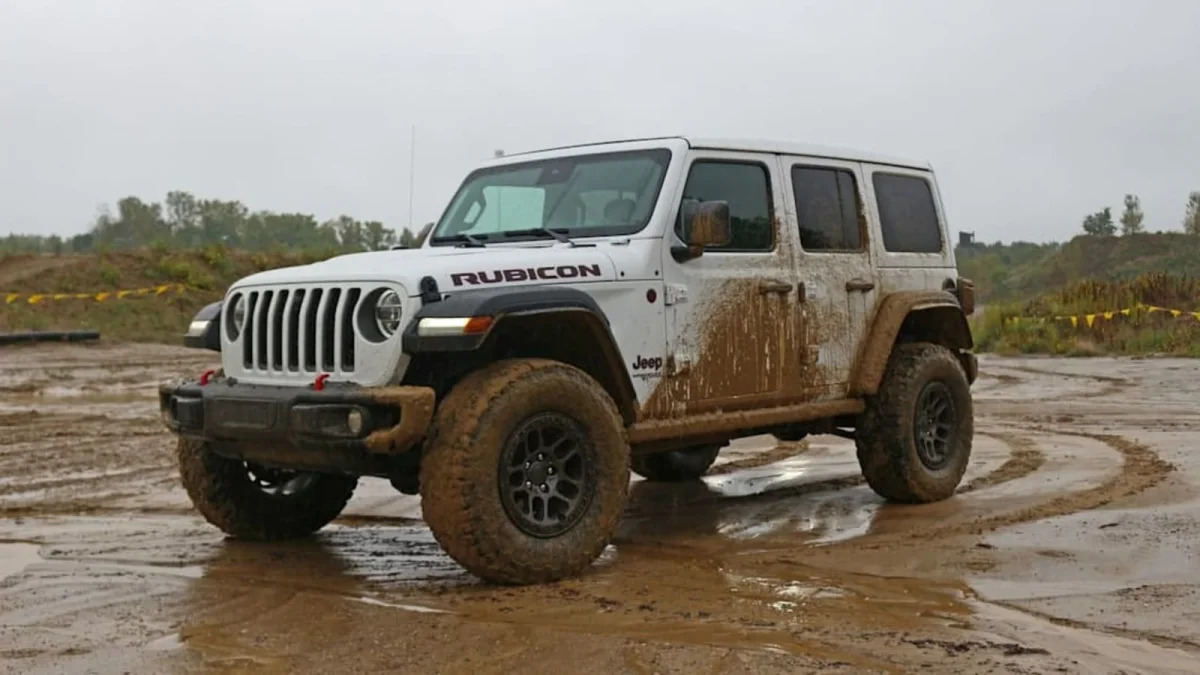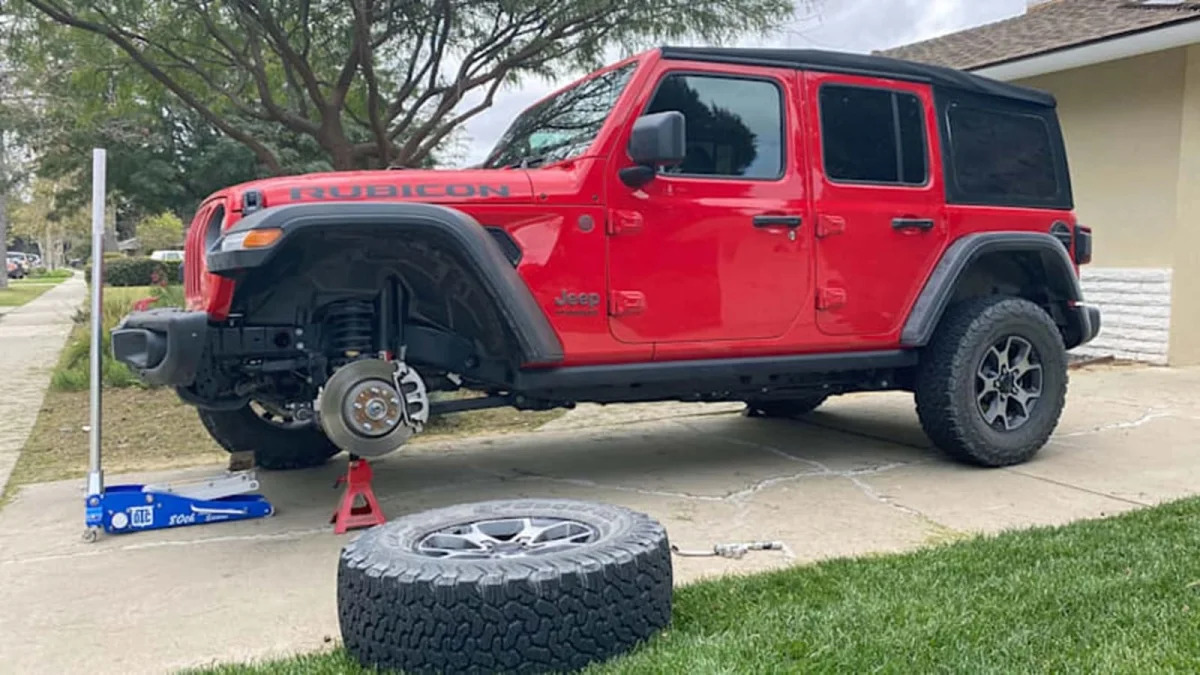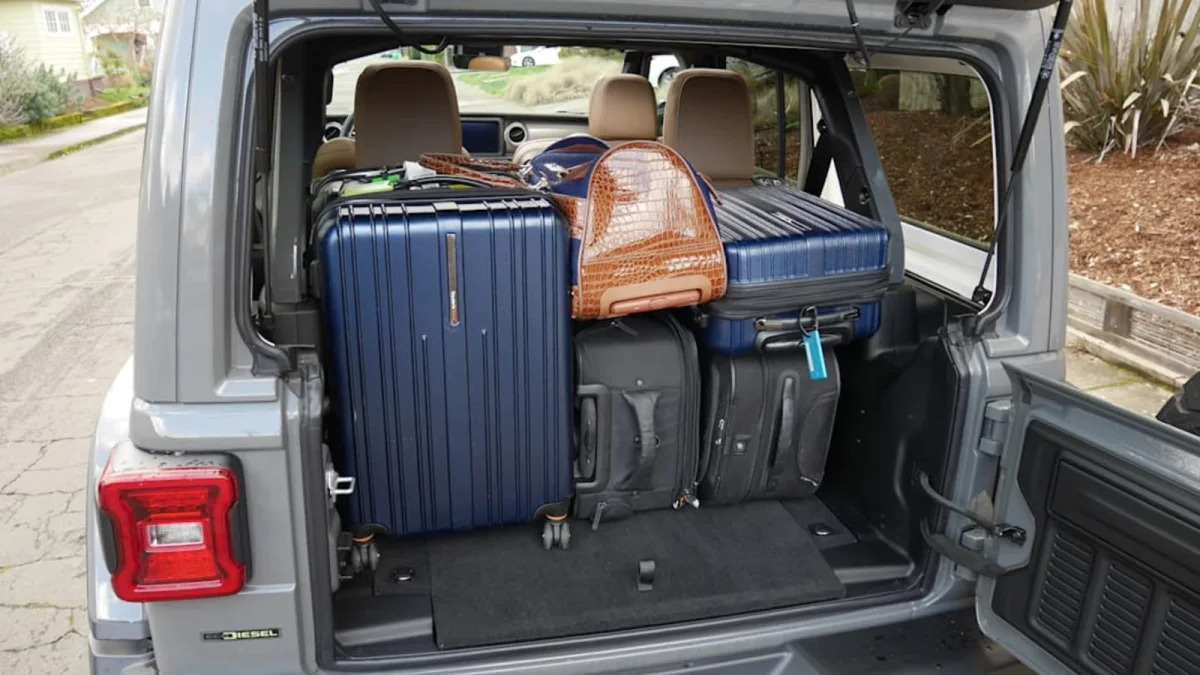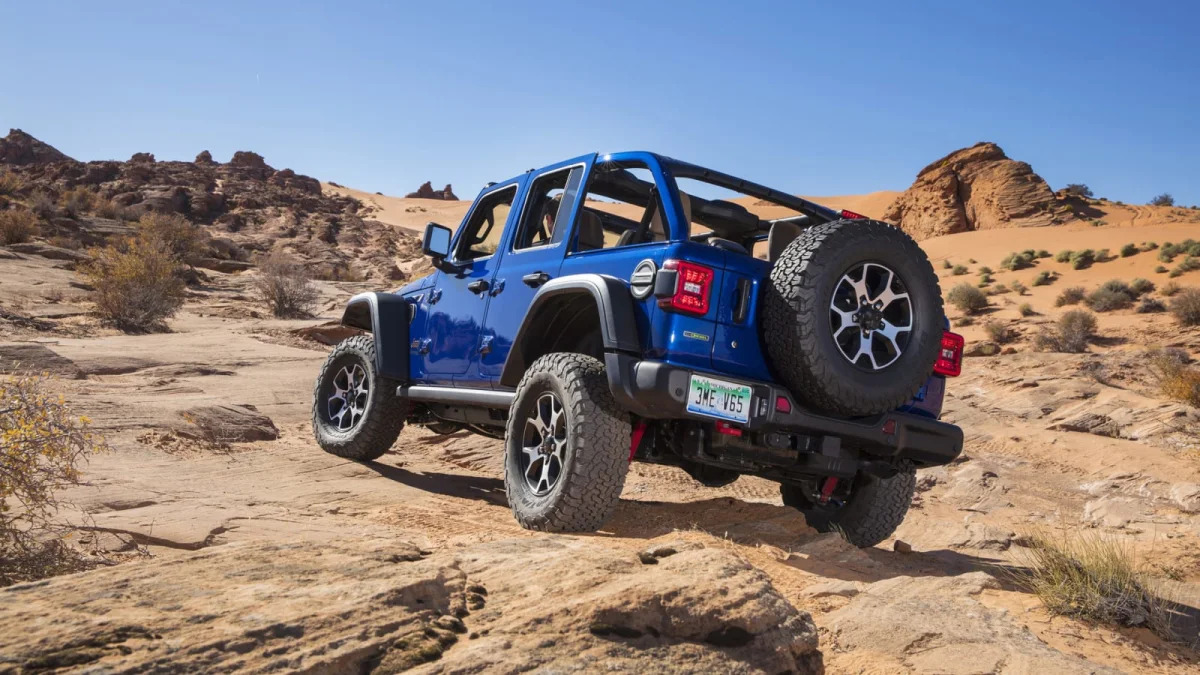2024 Jeep Wrangler Review: A big year of big improvements

Pros: Nearly endless variety; go-anywhere capability; great infotainment system; the roof and doors come off; 4xe plug-in hybrid
Cons: Refinement and on-road handling is laughable by modern SUV standards; iffy safety ratings
The 2024 Jeep Wrangler is entering the new year as a refreshed model with much-improved tech, useful feature add-ons and the same go-anywhere attitude as always. There are four engine options, including the excellent plug-in hybrid Wrangler 4xe and the hilarious V8-powered Rubicon 392. As always, there are two-door and four-door body styles, plus numerous top and door options that allow you to get closer to nature when off-roading.
Then there are the trim levels/models, which inject different characters into the Wrangler, just like its biggest rival, the Ford Bronco . You can go basic and keep things cheap with a manual Sport, get the most capability with the Rubicon or opt for something a little more on-road-oriented and luxurious with the Sahara X. That luxury side of the Wrangler shines brighter than ever now, too, as the refresh tacks on big-ticket items like a 12.3-inch touchscreen, available power seats and a fancy, new trail guide app.
Deciding between it or a Ford Bronco will remain as difficult as ever, but each has their strengths and weaknesses. No matter the trim, the Bronco is going to ride and handle better on account of its independent front suspension. Its interior is similarly sparse and barebones as the Wrangler’s, but just like the Jeep, you can spec out a fancy Bronco, too. If you want a V8, the only option is to go Wrangler 392. If you’d rather go desert-running and jump all over the place, the clear choice is a Bronco Raptor. That said, variety runs rampant in both the Wrangler’s and the Bronco’s lineups, so the decision could just as easily come down to style preferences and customization possibilities. No matter your choice, stepping into a Wrangler means stepping into one of the most-capable off-road rigs that money can buy.
Interior & Technology | Passenger & Cargo Space | Performance, Towing & Fuel Economy
What they’re like to drive | Pricing & Trim Levels | Safety Features & Crash Ratings
What’s new for 2024?
The 2024 Jeep Wrangler goes through a big mid-cycle refresh that brings lots of added tech, minor styling revisions, new trim levels and more. A mid-model year update sees the addition of the Xtreme 35 package for two-door Wrangler in addition to the four-doors. And for the full rundown of everything that’s new and what we think about it, make sure to head over to our first drive review of the 2024 Wrangler.
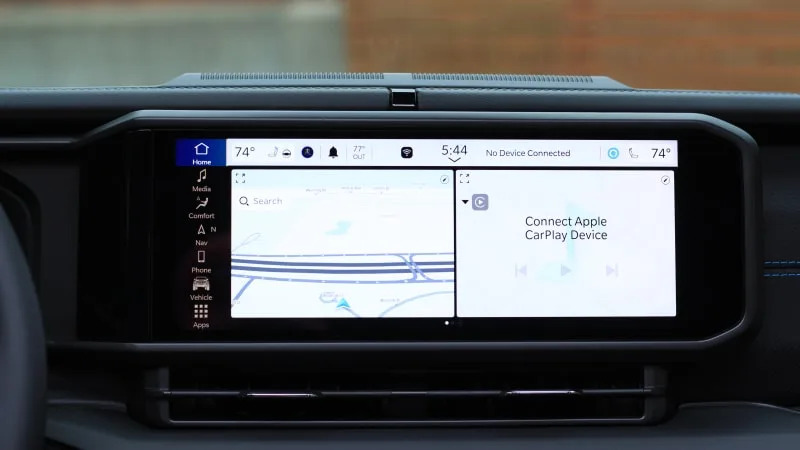
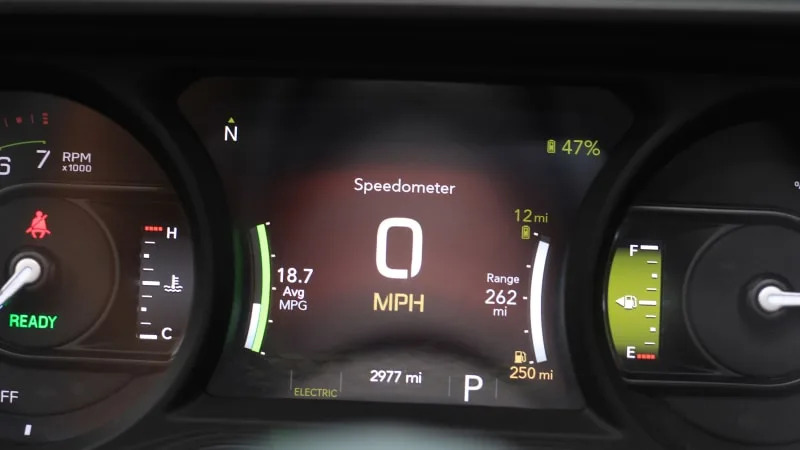
What are the Wrangler’s interior and in-car technology like?
The 2024 Jeep Wrangler has a stylized interior to match the exterior looks. There’s no mistaking it for any other vehicle when you’re inside (OK, apart from the Gladiator). The exterior paint bleeds through onto the pillars and other parts of the interior. A tall, upright seating position provides a commanding view over the relatively short, narrow hood. You sit close to the windows and a windshield that is more raked than past Wranglers. All the controls are within an easy reach.
Despite the rugged do-anything aesthetic, the 2024 Wrangler adds a heavy dose of tech in the form of a new 12.3-inch touchscreen running UConnect 5 that comes standard and supports wireless Apple CarPlay and Android Auto. It’s a huge upgrade over the pre-refresh infotainment and ensures the Wrangler is running the most up-to-date and modern tech that Stellantis offers. The instrument cluster is still a mix of digital and analog, as a small customizable screen is sandwiched in between a pair of analog gauges. Step up to higher trims like the Sahara or Rubicon and Jeep adds a larger screen in between the two round dials that features more content and slicker graphics.
There’s a disparity in materials depending on how you option it. A Sahara or Rubicon with all the leather boxes checked can start to feel half-luxurious inside, while a base Sport is a plastic and rubber paradise. Regardless of trim, though, the Wrangler’s interior is a very different place to be than most SUVs for sale today (and a great improvement over its predecessors). One big upgrade for 2024 is the ability to spec 12-way power front seats, which were unavailable up until this year.
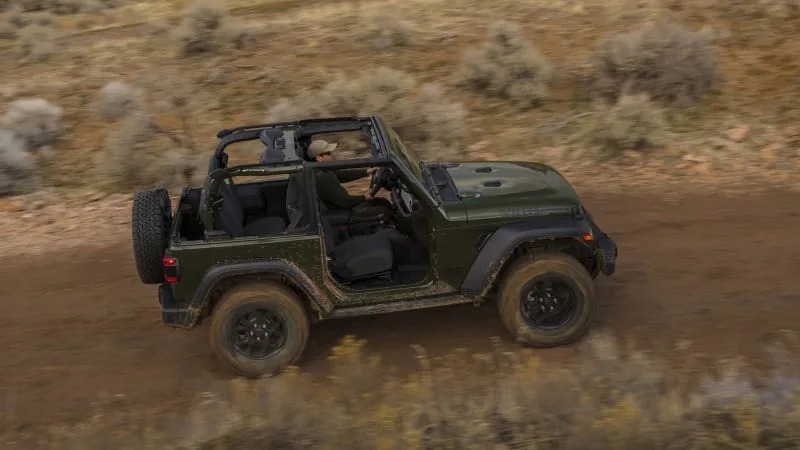

There are multiple roof designs available, but all allow the Wrangler to be a convertible, albeit with varying degrees of difficulty. It comes standard with the “Premium Soft Top, and that will be the loudest option of the bunch in the cabin. An optional “3-Piece Hard Top,” in body-colored pieces improves security and visibility and quiets things down considerably. It also provides a pair of removable panels over the front seats, but they have to be stored someplace. On top of that, the “Sunrider for Hardtop by Mopar” can be tacked on which replaces the removable panels over the front seats with a soft top you can shove up and back to open “within seconds.” You can also remove the rear-quarter window panels for a freer-flowing cabin while keeping the roof in place to prevent sunburns. If you’re OK with the sun, though, there’s another option, and it may be the best of both worlds. The Sky One-Touch Power Roof is basically a giant, powered cloth sunroof that provides the quickest and easiest way to let the air and sunshine in. It’s also the most expensive option at $3,995.
Finally, Jeep lets you do some things other manufacturers don’t with the Wrangler. The big one is that the doors (two or four) can be taken off — you can also spec the Dual Door Group option (with or without Premium Uppers) to get half-doors. Then, if you particularly enjoy the taste of bugs, the windshield can be laid flat on the hood. Remove the roof and you’re basically left with a Jeep skeleton. Features like these are just the beginning of why the Wrangler is so well loved by its fanbase.
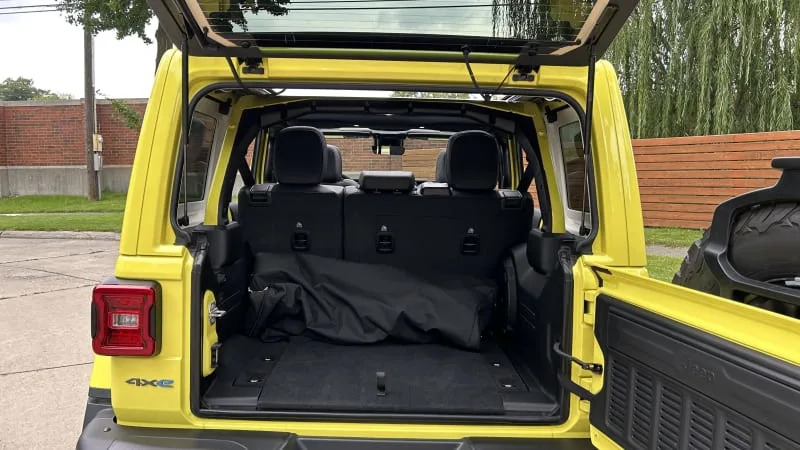
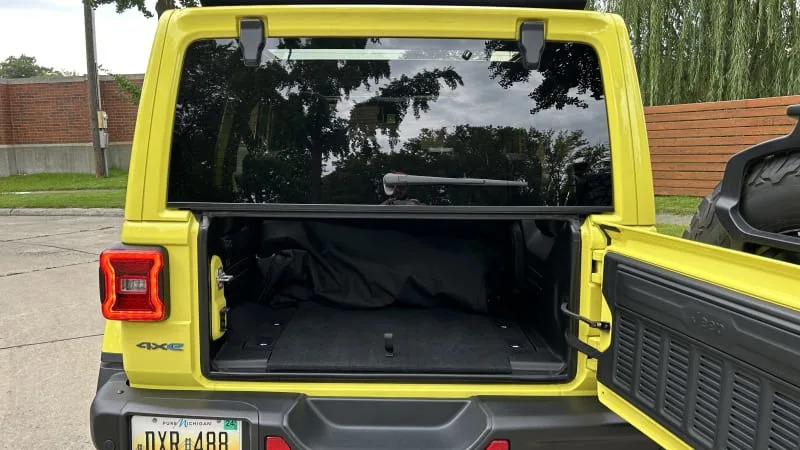

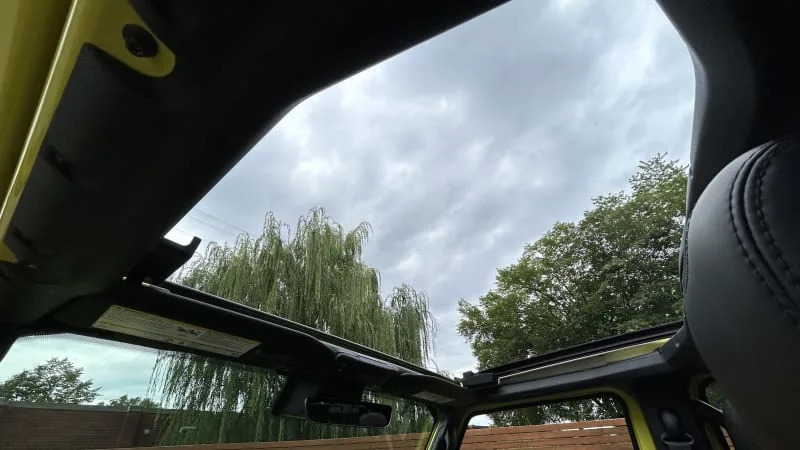
How big is the Wrangler?
Interior space for the Wrangler is respectable, especially if you opt for the four-door. Rear legroom is compromised in the two-door at just 35.7 inches, whereas the four-door provides a far more useful and comfortable 38.3 inches. The big annoyance is getting in and out of the two-door’s rear seats — lifting the suspension (as owners often do) makes it even worse. Once you’re back there, things are comfortable enough for short trips. However, the upright seating could become problematic for longer drives. Taller drivers may also find that the front seat doesn’t move back far enough, though at least there’s a power seat offered to more easily find your preferred seating position.
Cargo space for the two-door is a meager 12.9 cu-ft with the seats up and 46.9 cu-ft with them folded down. The larger four-door has 31.7 cu-ft of space with the seats up and 72.4 cu-ft when folded down, which is comparable to many two-row midsize crossovers. As we discovered in our Wrangler luggage test, the boxy design enhances versatility, but it’s also an unusually shaped area with door latches and roof pillars taking up space. The Bronco cargo area is more spacious.
Ease of loading depends on your choice of roof (soft top or hardtop). The hardtop opens up the swing door and glass area easily, while the soft top makes loading some items a pain because you’ll have to remove part of the soft top to access the whole loading area. It’s also possible for fine dust and sand to make their way through the soft top’s seals.
What are the Wrangler’s fuel economy and performance specs?
Settle in folks, this is going to take a while.
The standard engine is a 3.6-liter V6 good for 285 horsepower and 260 pound-feet of torque. A six-speed manual is standard and an eight-speed automatic is optional. The four-door automatic Wrangler Sport is rated for 18 mpg city, 23 mpg highway and 20 mpg combined. Differences in body style and transmission change these ratings – for example, an equivalent Wrangler Sport four-door with a manual transmission sees these number drop to 16/22/19 mpg.
A 2.0-liter turbocharged inline-four-cylinder is a no-cost option. It produces 270 hp and 295 lb-ft of torque. The eight-speed auto is standard. Fuel economy is rated at 20/20/20 with the four-cylinder, so your city efficiency is better, but highway fuel economy suffers. This engine also requires premium fuel.
The Wrangler 4xe is a plug-in hybrid that gets 49 MPGe (mile-per-gallon equivalent). It combines the 2.0-liter turbo with an electric motor and battery pack to achieve 375 hp and 470 lb-ft of torque. Those with short commutes can take advantage of its 22-mile all-electric range, provided they have somewhere to plug in when parked at home (public fast chargers cannot be used). Once the battery is depleted, Jeep estimates 20 mpg combined.
On the other end of the spectrum is the Wrangler Rubicon 392. This Wrangler enjoys a 6.4-liter V8 good for 470 hp and 470 lb-ft of torque. Jeep estimates a 0-60-mph time of 4.5 seconds, which is 40% quicker than a V6-powered Rubicon. A beefed up eight-speed automatic is included with a full-time Selec-Trac four-wheel-drive system. It’s rated at 13/16/14 mpg, dragged down both by the guzzling V8 and the standard 35-inch BFGoodrich all-terrain tires.
Every Wrangler has four-wheel drive, but the standard system (apart from 392 and 4xe) is operated by the driver with a floor-mounted transfer case control. The available (optional on other trims) Selec-Trac and Rock-Trac full-time four-wheel-drive systems effectively change into 4-Hi automatically when traction demands it. In this way, it’s a bit like an all-wheel-drive system, though it maintains a low range.
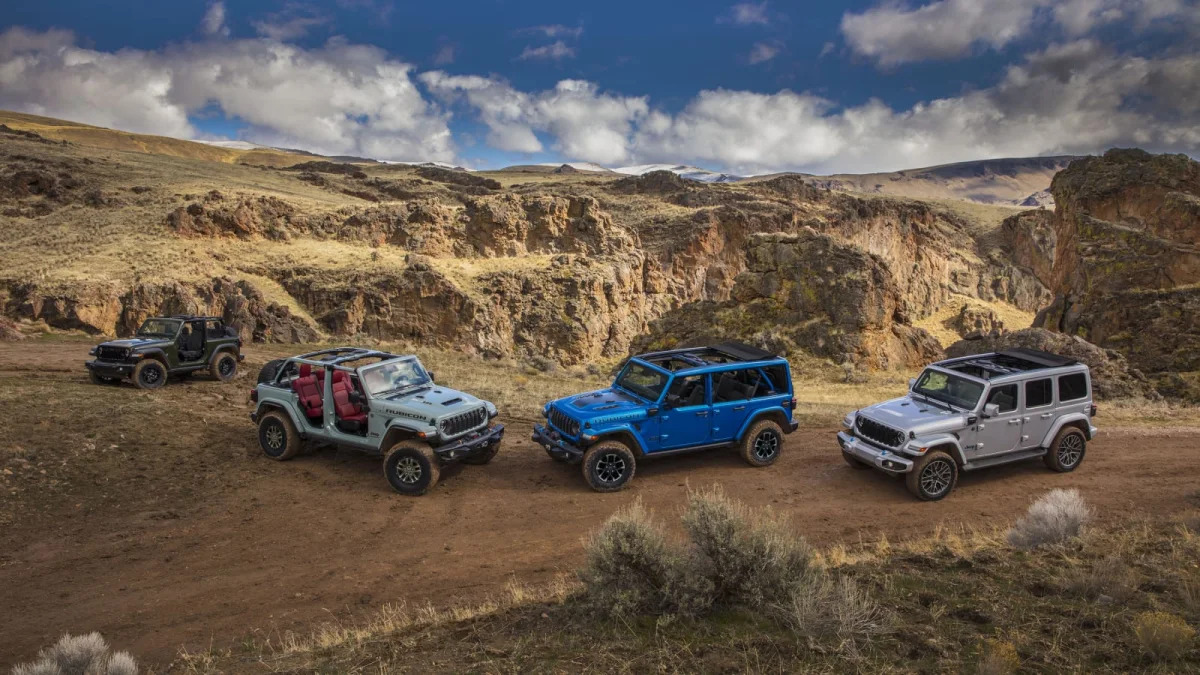
What’s the Wrangler like to drive?
Generally speaking, the Wrangler remains a bit of a bear to handle. The steering is slow, and crosswinds cause it stray from its lane on the highway. Bumps and road imperfections are felt throughout your body, and the wind noise is quite tragic at higher speeds with the soft top. The hardtop isn’t exactly serene, either, and in general you’ll find a Jeep Grand Cherokee or Toyota 4Runner to be way more comfortable and refined. Compared to the Bronco? Well, that could actually be worse. On the other hand, this generation of Wrangler is improved compared to its predecessors, especially its steering, which is not only far sharper and reassuring than the vaguely spooky Wranglers of the past. That said, while we wouldn’t necessarily dissuade someone from purchasing one for daily driving purposes, we wouldn’t recommend it, either.
Acceleration is perfectly adequate from the base V6 engine, and there’s very little hunting and pecking as the automatic gearbox picks the proper ratio. The six-speed manual is fine, with a reasonable clutch pedal that’s not too hard or long to make using it a pain. Far from it. There’s just enough power to spin the rear tires from a standing start, but know that the much heavier four-door model will be considerably slower than the two-door Wrangler. As for the turbocharged four-cylinder, it may enjoy a tiny fuel economy advantage, but the real reason to get it is acceleration. The thrust still won’t blow you away, but the turbo does represent a performance upgrade for that off-the-line low-rpm torque it offers.
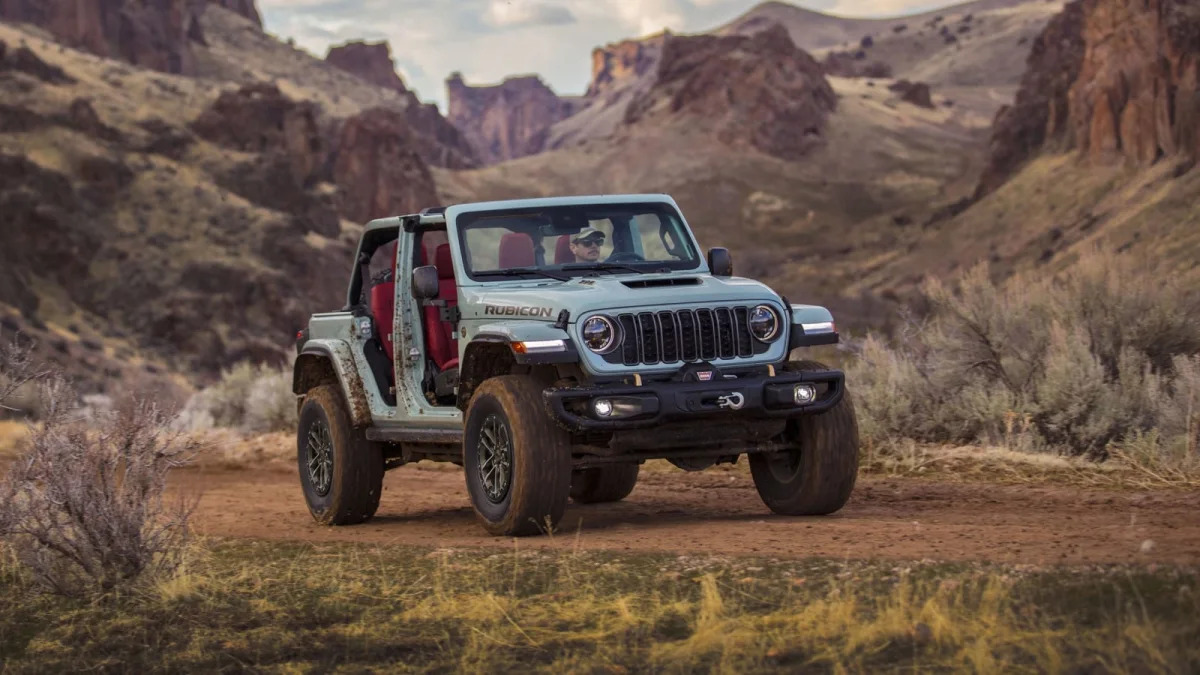
Things really get interesting with the high-output 4xe plug-in hybrid and the V8-powered Rubicon 392. Both weigh about the same and are offered in limited varieties, but go about their missions in very different ways. The frugal 4xe offers much of the 392’s acceleration, but without its fantastic V8 soundtrack. In exchange, you get great mileage (for a Wrangler, of course) and the smug satisfaction of knowing that you’re more likely to make an environmental impact by driving through it, rather than polluting it. That said, there are few cars on sale today that are as ridiculous to drive as the Wrangler 392 is, so if you’re in it for smiles and the most over-the-top experience you can get, it won’t disappoint.
With the Xtreme 35 package, the Wrangler boasts the best approach, departure and breakover angles in the dedicated 4×4 space – including the Sasquatch-package Ford Bronco.
What other Jeep Wrangler reviews can I read?
2024 Jeep Wrangler First Drive Review: More comfortable, most capable
We take the refreshed Wrangler for a spin and tell you everything you need to know about what’s new.
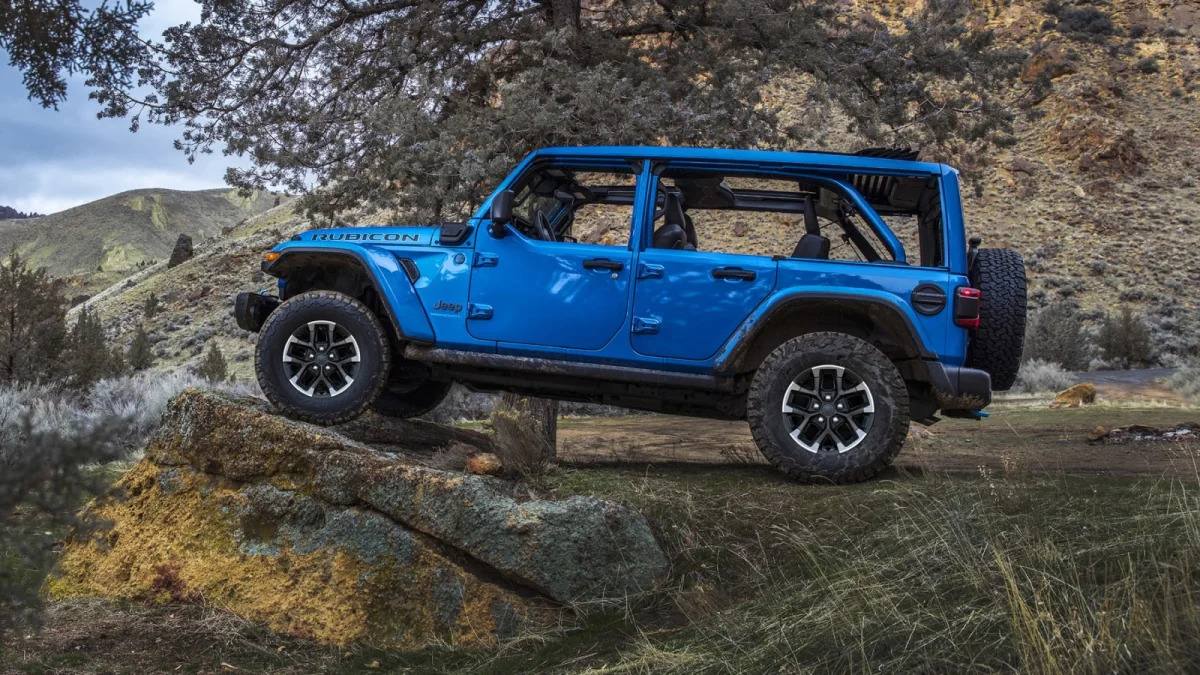
2022 Jeep Wrangler Rubicon Xtreme Recon First Drive | Bracing for Bigfoot
Jeep adds factory 35s and another lift. Is that enough to slay the ‘Squatch?
2021 Jeep Wrangler Rubicon 392 Road Test Review | Pounding pavement the American way
The V8 Wrangler is exactly what you think it is, and that’s OK.
2021 Jeep Wrangler 4xe First Drive Review | The plug-in Wrangler is sneaky good
The best Wrangler is the one you won’t hear coming.
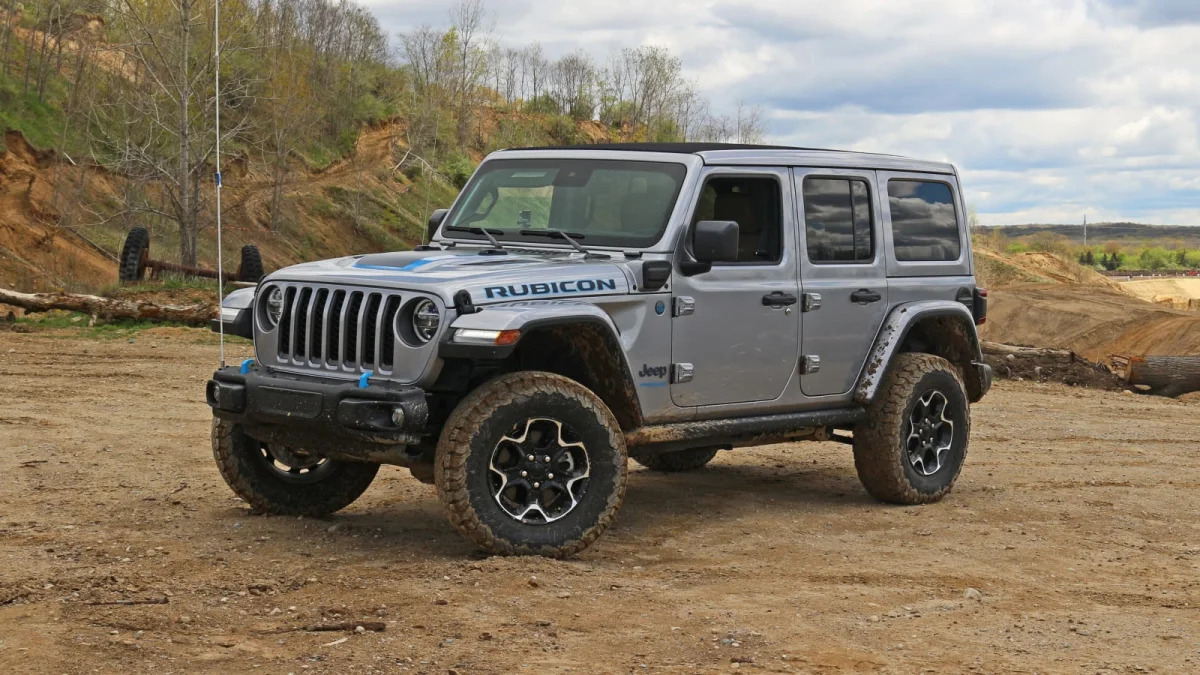
2020 Jeep Wrangler Unlimited Rubicon Suspension Deep Dive
Climb underneath the ultimate JL Wrangler Unlimited (now with EcoDiesel!)
Jeep Wrangler Unlimited Luggage Test | How much can you bring to the Rubicon in a Rubicon?
The four-door JL is supposedly a family vehicle. Oh yeah? Let’s see.
2020 Jeep Wrangler EcoDiesel First Drive Review | You asked for it …
The long-awaited awaited Wrangler diesel came and went quickly, but here’s our review in case you were considering picking one up used.
2018 Jeep Wrangler First Drive Review | Improving an Icon
Building a better Wrangler means more comfort, tech, and capability than ever before.
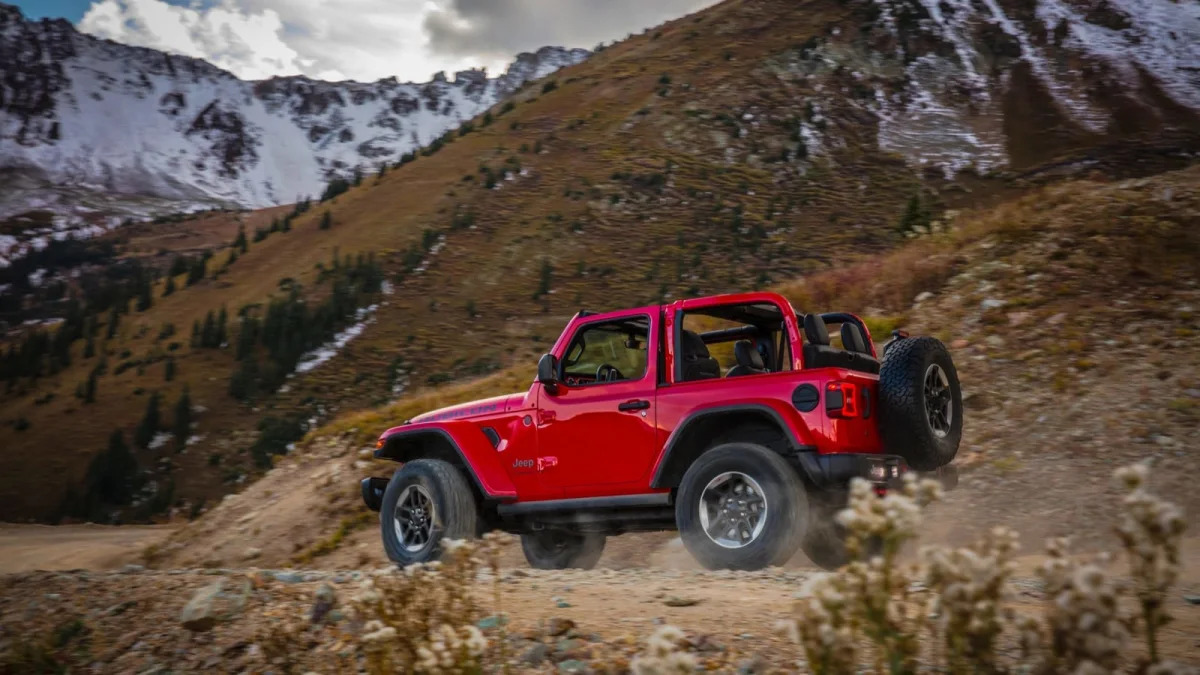
How much is the 2024 Wrangler and what features are available?
Pricing for the 2024 Wrangler starts at $33,890, including the $1,895 destination charge. The four-door Wrangler starts at $38,490. The 2023 Wrangler 4xe, which is four-door only, starts at $52,590, and that’s before at least $3,750 in tax credits. The Rubicon 392 starts at $93,440.
The basic Wrangler is a two-door Sport with a manual transmission. Few vehicles on the road today have as little standard equipment as the Wrangler. It has manual locks, manual windows, manual mirrors and the base 17-inch wheels are steel. As you step up through the trim levels, there is a dizzying number of options available, from powertrains and 4×4 systems, to fancy creature comforts like a heated steering wheel and adaptive cruise control.
There are numerous Wrangler trim levels: the base Sport, Sport S, Willys, Sahara, Rubicon, Rubicon X (new for 2024) and Rubicon 392. The trim lineup for the 4xe is nearly identical, but it adds the High Altitude trim and deletes the base Sport model. In terms of serious mechanical additions, the Rubicons provide the big-ticket items, including locking differentials, skid plates, 33-inch tires and electronic disconnecting sway bars. The Xtreme 35 package adds factory 35” tires and a slightly shorter rear axle ratio, a 1.5-inch lift and beadlock-capable wheels to the Willys, Rubicon or Rubicon 392.
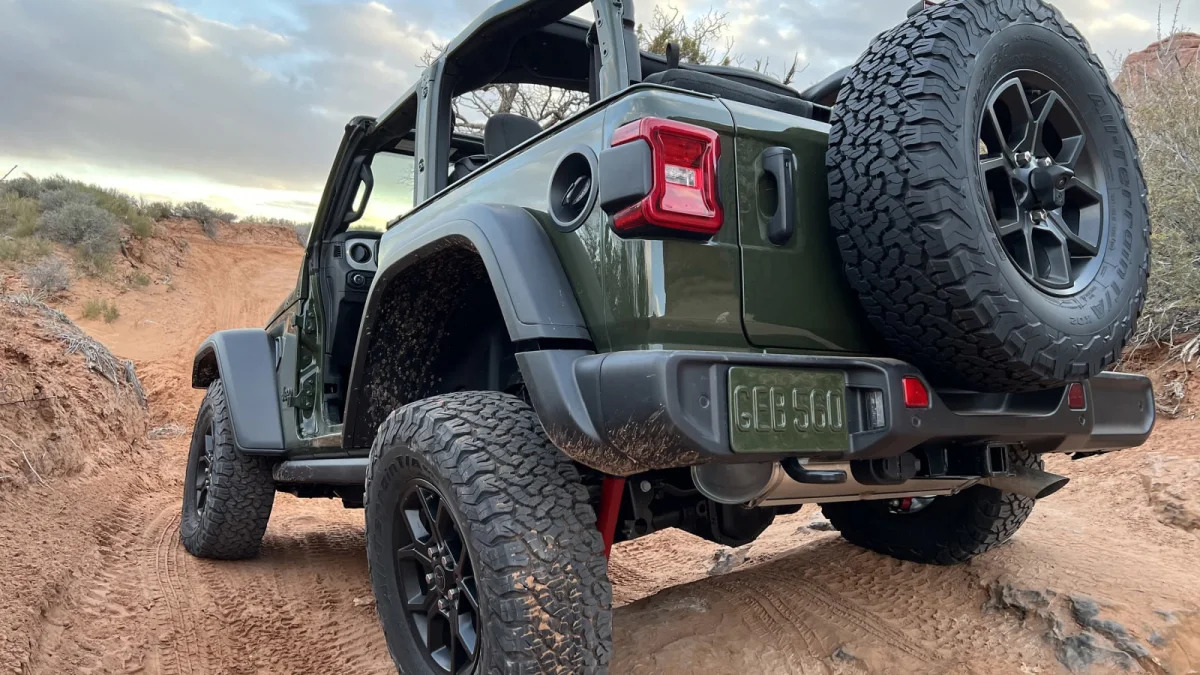
What are the Wrangler safety ratings and driver assistance features?
There isn’t much to speak of when it comes to active safety tech for the Wrangler, but adaptive cruise control and forward collision warning with automatic braking are at least available on the automatic-equipped Sport S and above trims. Blind-spot warning and rear cross-traffic alert are also available as an option. Jeep adds standard first- and second-row side curtain airbags for 2024, too.
The Insurance Institute for Highway Safety gave the four-door Wrangler (pre-refresh) the best-possible rating of “Good” for its performance in the Moderate Overlap Front, Side and Roof Strength crash tests. It got the second-worst “Marginal” rating in the Small Overlap Front crash test, however, in part because it tipped onto its side after striking the crash barrier. Needless to say, that’s not ideal. The IIHS re-tested the Wrangler to see if Jeep had fixed this issue, but the vehicle flipped again. The headlight ratings are also subpar, deemed to be either “Marginal” or “Poor” depending on equipment. At least the available forward collision avoidance system received top marks. We’ll update this post should test results for the refreshed 2024 model become available.
